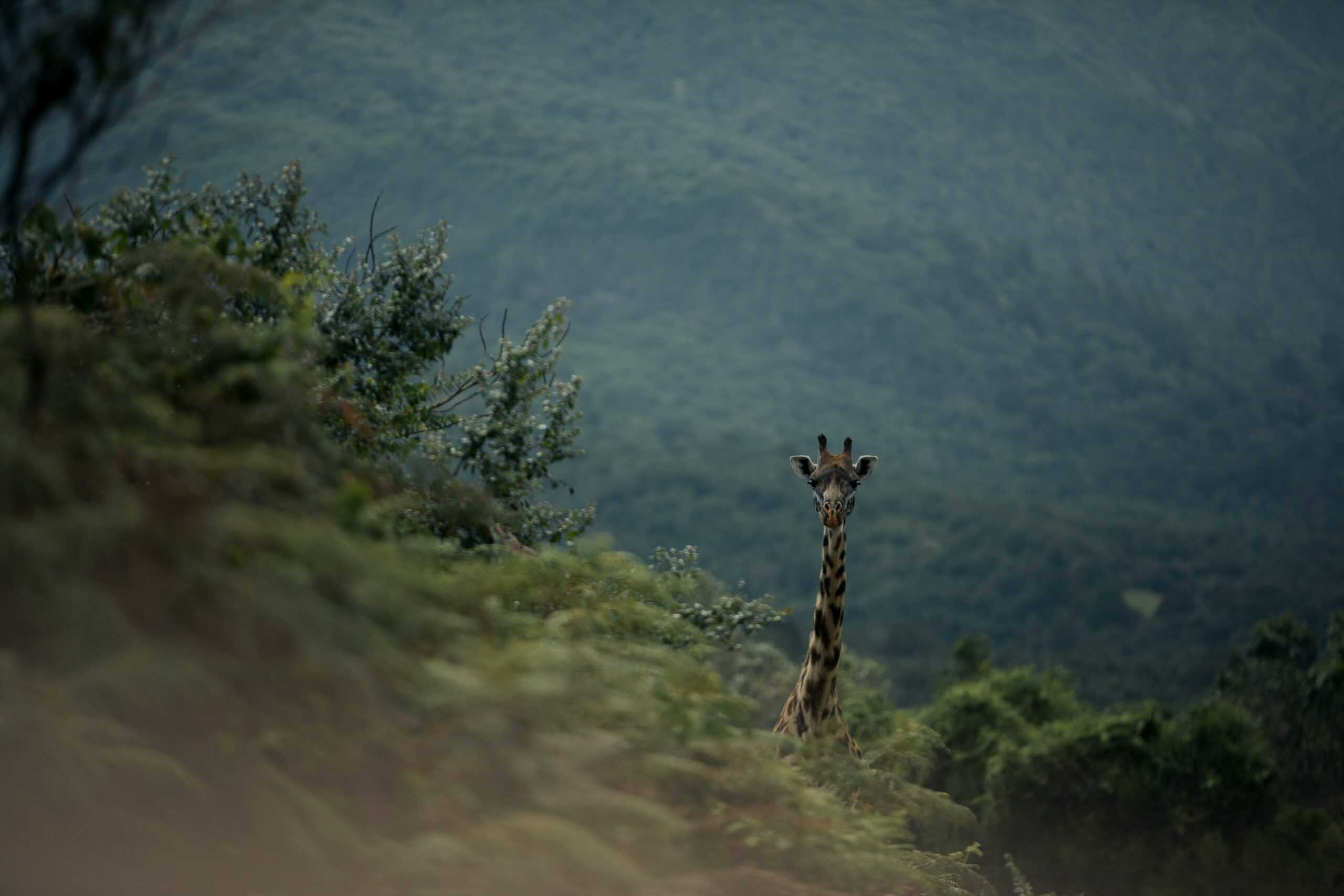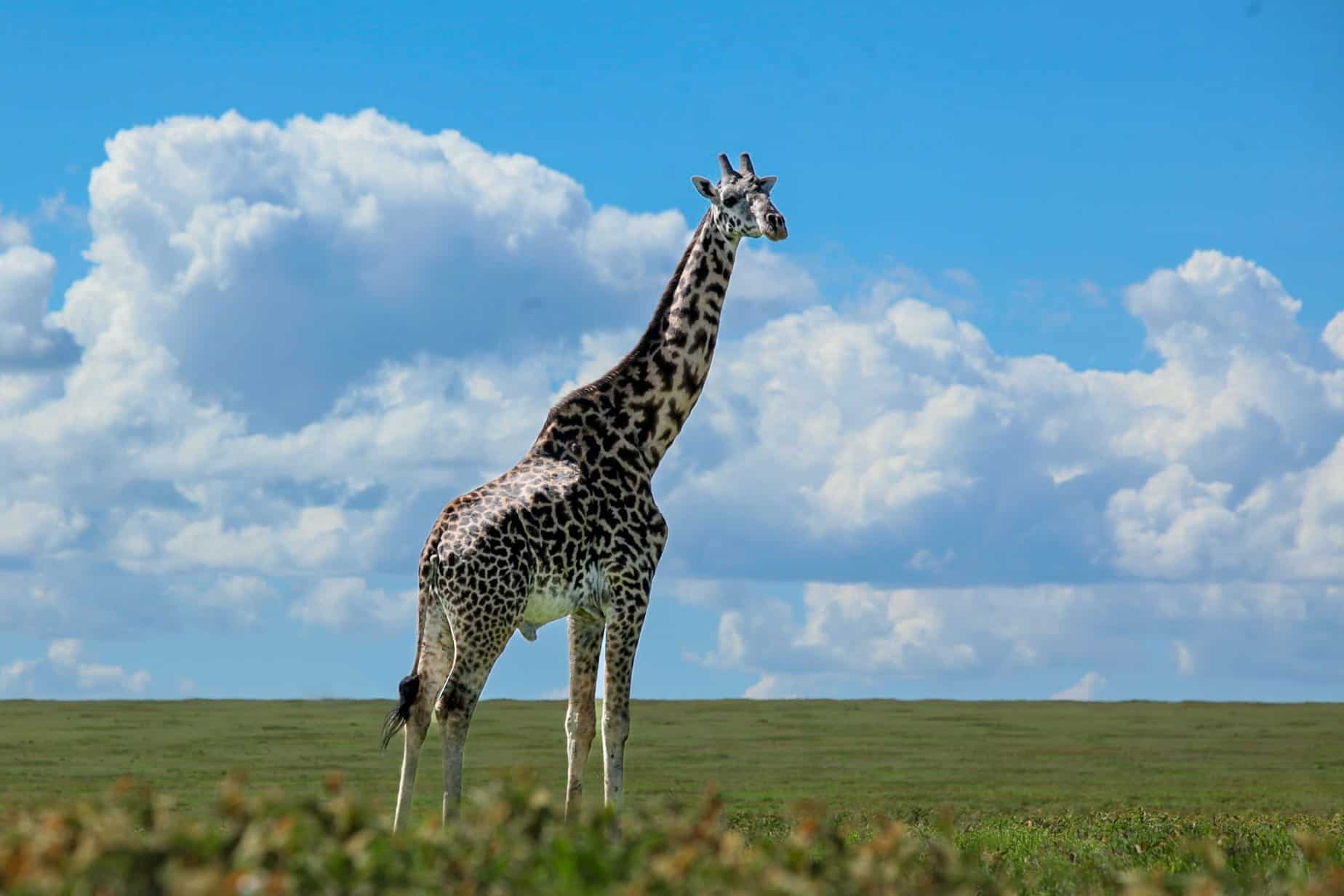

Silent Giants?
The Mystery of Giraffe Sounds
Lying under the cover of canvas at night, many of us have heard a symphony of sounds – the far-off roars and grunts of lions, the chatter and whoops of hyenas, the braying of zebras. But one animal, often forgotten, is the giraffe. Has anyone ever heard their part in this orchestra of sound-makers? Perhaps a grunt here and there when fighting or a snort of alarm, but what sounds do these animals actually make?
Giraffes have long puzzled observers with their silent demeanour, leading to years of assumptions about their communicative abilities – or supposed lack thereof. Ancient explorers and scientists, noting the giraffe’s quiet nature, assumed that these towering creatures were mute. Some early naturalists even suggested that their elongated necks somehow inhibited sound production, a theory rooted more in speculation than science. This notion persisted, reinforcing the idea that giraffes were largely silent beings with minimal social communication.

The giraffe’s generally stoic, inexpressive face further fueled these assumptions. They often seem to observe their surroundings with a calm, almost detached curiosity, rarely showing facial expressions that we might interpret as “communication.” Unlike other mammals with highly visible interactions, giraffes were thought to rely primarily on body language. Yet today, we know that the story of giraffe communication is far more complex.
In 1993, a researcher put forward a theory addressing the giraffe’s mysterious voice box, or larynx, and the challenges posed by its unique anatomy. This study suggested that giraffes might suffer from degeneration of the laryngeal nerve, a crucial nerve that connects the brain to the voice box. This condition, common in thoroughbred horses, is known as laryngeal neuropathy. It is caused by the sheer length of the nerve, making it difficult to maintain its own vitality. Thoroughbreds suffer due to inbreeding, which compounds this issue, but giraffes have a much healthier genetic diversity, which has likely helped them avoid the same problem. Surprisingly, the giraffe’s larynx and laryngeal nerve are both well-developed, a fact that suggests these structures still serve a purpose. In evolutionary biology, anatomical structures that remain well-developed are generally in use, rather than vestigial, hinting that giraffes might indeed be communicating in ways we cannot hear.

Modern studies have uncovered compelling evidence to support this. In German zoos, researchers discovered that giraffes emit a soft hum at night, a sound we can actually hear under the right conditions. This hum, primarily heard during separation, indicates that giraffes may use sound to maintain a form of nocturnal connection when isolated. Another study in the United States observed mother giraffes making gentle, melodic sounds to communicate with their calves, akin to those of their forest-dwelling cousins, the okapi. These maternal calls consist of two distinct vocalisations: one within the human audible range, and another infrasonic, below our threshold of hearing. Both sounds are generated by a deliberate head-stretching motion, akin to the resonant effect of blowing across the top of a bottle rather than by vocal cord vibrations. This method may help giraffes produce sounds without the energy cost of vocal cord oscillation, a fascinating adaptation for such a tall creature.

Interestingly, studies on giraffe social behaviour reveal that they may rely heavily on low-frequency sounds to coordinate within their groups. Low frequencies travel further than higher pitches, particularly in the open savannahs, allowing giraffes to maintain contact over considerable distances. This might also explain why humans rarely detect their sounds; we are simply not equipped to perceive the full spectrum of giraffe communication. With each new study, it becomes clearer that giraffes are not silent creatures; rather, they communicate in a way that has long eluded human perception. As our understanding of animal communication deepens, the giraffe’s “secret language” reminds us of the vast and often hidden complexity of nature

Enquire now
Facebook
Instagram




Silent Giants? The Mystery of Giraffe Sounds

Introducing Entara’s New Camp






